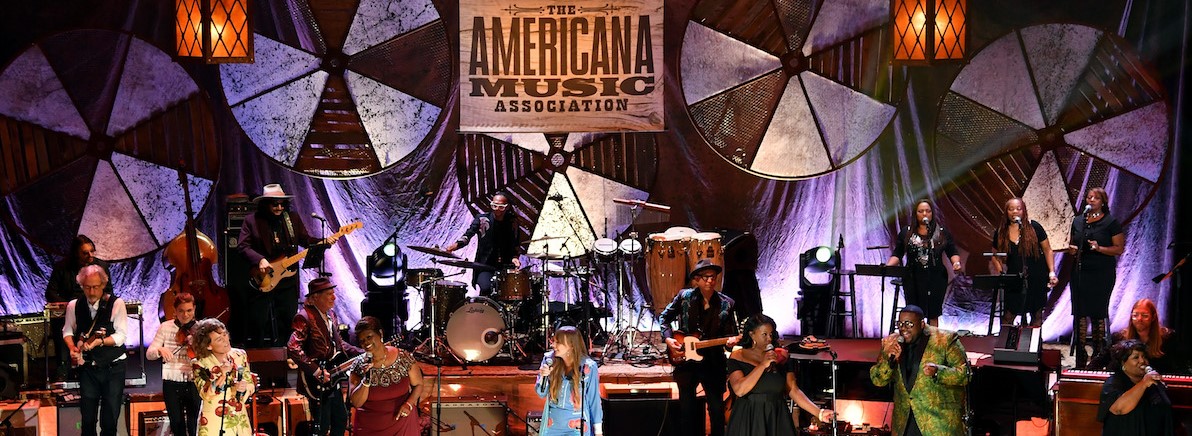Special “Lick of the Day” guest: Jason Wilber of the John Prine band.
Author: Americana Music News
At the Bluebird: Peter Cooper, Karen Leipziger, Phil Lee, Dave Duncan
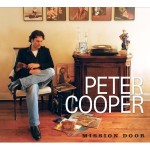 By Mary Sack
By Mary Sack
Tonight I witnessed yet another, one-of-a-kind Nashville Moment. It wasn’t a Grammy moment. Could’ve been, in an alternate universe. Three days after The Grammy Awards were broadcast live from Los Angeles, I saw a bona fide 2012 Grammy Nominee (for “Best Children’s Album”) Peter Cooper, bona fide rapscallion Phil Lee, new-to-me Dave Duncan and the surprisingly soulful Karen Leipziger, accompanied by Andy Ellis, perform in an intimate, early-evening round where they laid songs out one-by-one in a packed-to-the-walls house of rapt listeners and several friends.
There’s lots to say about each of these songwriters, but collectively they shared one of the coolest, bluesiest and fun evenings I’ve ever heard at The Bluebird Café in Nashville’
I really went out in the rain to this show to lend an ear to Karen Leipziger. I’ve known her as a crack publicist and almost forgot that she is also a songwriter with many, very cool cuts with some very well-known blues artists. I was shocked to realize I knew most of her songs but never realized over all of these years that she’d written them. Karen has always been humble, but THESE songs were monsters. Chief Eddy Clearwater recently recorded her cautionary “Do Unto Others”, which I swear could have a run in the Christian Blues market, if one exists.
Peter Cooper played many of my personal favorites, including “715” — a song about Hank Aaron and growing up in the shadow of racism and inequality. He shared his recent Grammy experience with the crowd, as well as his good natured humor about being a “runner-up” but I left the show thinking what a great picker he’s become in addition to his growth as an artist.
Fresh back in Nashville from his latest UK tour, Phil Lee never disappoints, toying with the audience as he does, playing songs like the tragically catchy “Just Some Girl” as well as the brand new “Cry,” while accompanied by the McCrary Sisters from various seats around the room. Simply arresting, those voices.
Layin’ it down with finesse, Dave Duncan definitely has the blues. He, too, could lay down a lick and sang of learning more about the blues in two weeks from his lady than “20 Years of BB King” – a song that also earned its own nomination from the Blues Music Association in 2008.
It was one of those nights when a one great song is followed by another surprisingly, captivating great song, all backed with solid performances. And it was free, no cover. Only in Nashville.
Merl Johnson’s “A Better Man”
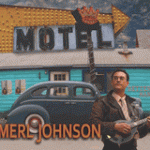 By Joe Ross
By Joe Ross
– Everyone’s heard of Merle Haggard and Merle Travis, and now it’s time to get acquainted with Merl Johnson. Growing up in Woodbridge, Va. about 20 miles southwest of Washington, D.C., the young musician accompanied his dad to many festivals, concerts, and jams. Merl took to music early on, appearing on his first radio show at age six. He also had the opportunity to travel and play with such legends as Dave Evans, James King, Frank Wakefield, Charlie Waller, the Stoneman Sisters, Gillis Brothers, Junior Sisk, Don Stover,Joe Meadows, Bobby Hicks, Buzz Busby and Bill Harrell.
Blessed with a smooth voice and talent for fiddle and mandolin, Merl Johnson is now “A Better Man,” knowing that he can succeed at about anything he decides to take on. Perhaps that’s why he’s relocated to Asheville, N.C., where he plays fiddle with Travers Chandler & Avery County, a second-round nominee for IBMA’s “Emerging Artist of the Year” Award. While that bandemphasizes “Baltimore Barroom Bluegrass,” Johnson’s solo album displays his own versatility and eclectic tastes. Yet he never forgets his upbringing and influences with songs like Carter Stanley’s “Sweetest Love,” Bobby Hicks’ “Angel’s Waltz” or a ballad about a 1970s murder spree in Richmond, Va., “The Briley Boys,” written by Bob Perilla.
“In Those Hills” and “Power of Prayer” were penned by his father, and Merl shows his own hand at instrumental tunecrafting with “Amandalyn” and “You’ll Find Monroe WrittenThere.” Fans of fine bow work should tune into the slow triple fiddled closing rendition of Peter Jung’s waltz “Far Away.”
Merl Johnson has developed a fairly extensive network of pickers in his
region. For example, banjo-player Dick Smith makes his home in Alexandria, Va. and has worked with The Country Store, Del McCoury Band, Country Gentlemen, Lynn Morris Band, Bill Clifton and Mike O’Reilly.
On “Better Man,” we also hear guitarist Danny Knicely, another well-rounded and proficient picker from Virginia’s Shenandoah Valley. The album also features Stefan Custodi (bass), Jay Starling (Dobro), Brennen Ernst (clawhammer banjo on “Dance Around the Daisies”), Tad Marks (fiddle on two cuts) and Jenny Leigh Obert (second fiddle on four cuts.)
Vocal harmonies are laid in by Jay Starling and Tom Mindte. Their chorus blends work better on some songs than on others, but we certainly appreciate Mindte’s support of young up-and-comers like Merl Johnson on his Patuxent label.
“In Those Hills” is a song that speaks to Virginia’s beauty and color, and this CD illustrates that Merl Johnson’s music from the area is also
very special.
Americana music chart: “Chimes of Freedom,” Gretchen Peters in Top 10
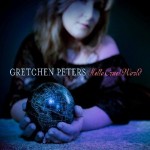 It’s an unusual week on the Americana music airplay chart, with no new entries in the top 40. The Chimes of Freedom Dylan tribute and Gretchen Peters’ Hello Cruel World are among the biggest gainers, with both breaking into the top 10.
It’s an unusual week on the Americana music airplay chart, with no new entries in the top 40. The Chimes of Freedom Dylan tribute and Gretchen Peters’ Hello Cruel World are among the biggest gainers, with both breaking into the top 10.
The real action is on the most-added list with Anais Mitchell’s Young Man in America, Otis Taylor’s Contraband, the Chieftains’ Voice of Ages, Amos Lee’s As the Crow Flies and the Punch Brothers’ Who’s Feeling Young Now? picking up airplay.
Singer-songwriter and occasional Sun209 contributor Tommy Womack’s new Now What! has been added to seven stations, tying Bruce Springsteen. Pretty good company.
The classic roots-rock of Springfield, Missouri
By Bruce Rosenstein
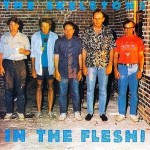 – If I could be magically transported to any roots-rock gig, I’d pick wherever guitarist D. Clinton (Donnie) Thompson and bassist Lou Whitney are playing, in whatever band configuration. For nearly 35 years, these Springfield, Missouri musicians have led excellent bands with a revolving cast of members under the names The Skeletons, The Morells and The Symptoms.
– If I could be magically transported to any roots-rock gig, I’d pick wherever guitarist D. Clinton (Donnie) Thompson and bassist Lou Whitney are playing, in whatever band configuration. For nearly 35 years, these Springfield, Missouri musicians have led excellent bands with a revolving cast of members under the names The Skeletons, The Morells and The Symptoms.
I’ve known Donnie and Lou since the late ‘70s, when Steve Leeds and I were planning the compilation, Declaration of Independents, for our short-lived label, Ambition Records. The LP contained Donnie’s version of the Ventures’ “Driving Guitars,” and another Springfield contribution, Jim Wunderle’s cover of the Seeds’ “Pushin’ Too Hard.” (Jim was the lead singer of The Symptoms.) We also released a 45, under the name the Original Symptoms, of a cover of the Swingin’ Medallions’ “Double Shot of My Baby’s Love,” with Donnie, Lou and Jim on vocals.
The Skeletons/Morells/Symptoms haven’t made it particularly big in terms of record sales or national recognition, but they have shown a genius for two valuable musical abilities: collaboration and interpretation. I have seen them as the backing band for Steve Forbert and Syd Straw, and they also formed the core of the band for a wonderful 1990 Jonathan Richman album, Jonathan Goes Country. Their album backing Syd Straw, War and Peace, is terrific. I saw the band backing Syd in 1996 at, of all places, the 25th anniversary of the Kennedy Center. Two moments in particular stand out: Donnie’s blistering guitar on The Ramones’ “Beat on the Brat,” and Syd and Lou’s duet on George Jones and Tammy Wynette’s “We’re Not the Jet Set.” Individually or collectively, they have also collaborated with Dave Alvin, Robbie Fulks, Boxcar Willie and others.
As for interpretation, besides the covers mentioned above, they have put their own stamp on many songs written by others. The Skeletons’ In the Flesh! CD includes versions of, among others, Sonny Bono’s “Laugh at Me,” Peter, Paul & Mary’s “Very Last Day” and “Crazy Country Hop” by the recently departed Johnny Otis. All of the albums by the group contain covers, which demonstrate that you don’t necessarily need original material to sound original.
I’ll write a follow-up post on what the band members are doing today. But in the meantime, check out some of their recorded material, and if you can, listen to these musicians in person, in collaboration or on their own. In that setting, it is roots-rock music at its most thrilling and authentic.
Richard Thompson times 3 on Cayamo
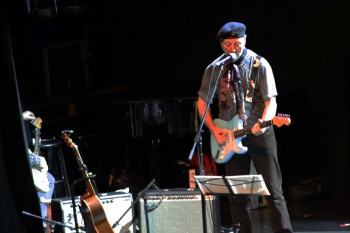
Richard Thompson on Cayamo
Richard Thompson was a solo artist on Cayamo this week. And a member of a duo. And a member of a trio.
And it was all good.
Thompson teamed with Loudon Wainwright for a reprise of Loud and Rich, playing a few originals, but largely covers of songs ranging from Bob Dylan to Charlie Poole.
He also played two sets with power trio bandmates Taras Prodaniuk and Michael Jerome. He described the trio as a combination of Cream and the Kingston Trio (and alternately the Jim Hendrix Experience and Peter, Paul and Mary) and played a truncated version of “Tom Dooley” to the melody of “Sunshine of Your Love.” The Cream reference was apt. The trio reminded us just how potent guitar, bass and drums can be.
But it’s probably not a surprise that the very best Richard Thompson show was his solo acoustic set. Favorites like “I Misunderstood” and “1952 Vincent Black Lightning” were complemented by the hard-rocking “Valerie” and a fun cover of the Who’s “Legal Matter.”
Lucinda Williams on Cayamo
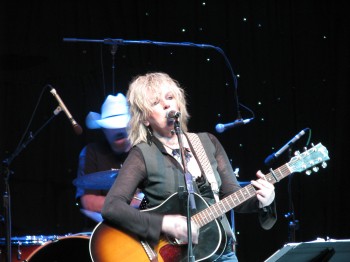
Lucinda Williams on Cayamo
Lucinda Williams seemed to take a while to get accustomed to playing on a cruise ship, with her shows getting stronger throughout the week on Cayamo. She acknowledged her growing comfort level at the outset of her third and final show, saying it takes a while to get your bearings on board and that she was excited to play the 6 p.m. show because “people are fresher.”
She then launched into an excellent set, opening with “Car Wheels on a Gravel Road.” Highlights included “Changed the Locks, “Still I Long For Your Kiss” and “Get Right With God,” but Lucinda seemed most tickled by her hard-rocking “Honey Bee.” “That’ll start your night out right,” she said.
The encore was the Buffalo Springfield classic, “For What It’s Worth,” written by Stephen Stills. This was a fun and vibrant take, and although the song was inspired by police clashing with teens on the Sunset Strip almost a half century ago, it still has resonance.
“This song was written in the ’60s, but it’s still very relevant today,” Lucinda said.
Buddy Miller and Jim Lauderdale celebrate George Jones
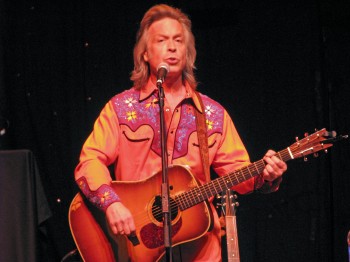
Jim Lauderdale salutes George Jones on Cayamo
Jim Lauderdale dropped in on Buddy Miller’s first show on Cayamo, a music festival on a cruise ship.
Dressed in bright red slacks and shirt worthy of the Opry, Lauderdale apparently inspired Miller to do a three-song tribute to George Jones, a man both artists admire. Lauderdale even portrayed Jones in a production at the Ryman in Nashville a few years back.
The two performed “Why Baby Why,” “The Race Is On” and “She Thinks I Still Care.” Lauderdale followed with his own “King of Broken Hearts,” a nod to Gram Parsons.
Lauderdale also announced that he and Miller will soon be co-hosting a show on Sirius-XM’s “Outlaw Country.”
John Prine on Cayamo
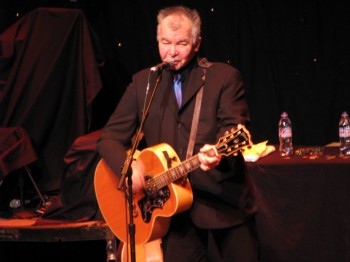
John Prine on Cayamo 2012
By Ken Paulson Four of the best minutes in a week full of great music on Cayamo came as Iris DeMent joined John Prine on “in Spite of Ourselves,” their very funny duet from the album of the same name. Prine is always a professional, and his shows with Dave Jacques and Jason Wilber are well-paced, spanning his best work of the past four decades. The three shows this week were no exception. But Prine absolutely beams when there’s a shift in the routine, and he was clearly having a good time with Iris. She stayed for “Unwed Fathers” and the finale “Paradise.” Prine has been on the Cayamo cruise before, but he hasn’t quite gotten over the sensation of singing while trying to hold onto your balance. He told the audience that if they see any performers who aren’t having a problem with their footing, “they’re drunk.” One early show finished at 7 p.m. “I haven’t been done with a show this early since I played the matinee at the Earl of Old Town,” Prine recalled.
Civil Wars rebound on Cayamo
The Civil Wars had to cancel a show due to John Paul White’s seasickness, but rebounded for a pair of shows on Tuesday. Their harmonies were pristine, despite the medical setback. The set was essentially their Barton Hollow album, plus reconstructions of the Jackson 5’s “I Want You Back” and Michael Jackson’s “Billie Jean.”
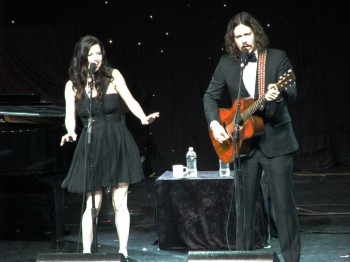
The Civil Wars on Cayamo
White thanked an onboard doctor for going “above and beyond the call” and was visibly relieved when he finished the first set after his illness. We have a hunch this may be the Civil Wars’ last Cayamo.
Belle Brigade dance party
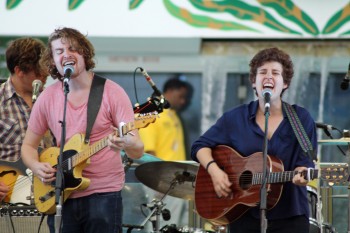
The Belle Brigade: Opening night on Cayamo
Americana music fans are good listeners, but it’s rare for a dance party to break out in their midst.
The best dancing on the Cayamo cruise this week has been at any show by the Belle Brigade. The young band opened the music cruise with a set on the pool deck on Sunday and then followed up with a late show in the Stardust Theatre, the largest venue and one usually reserved for the big name veterans.
Predictably, the theater was about a quarter full. Not so predictably, more than 40 audience members rushed the stage and danced to every upbeat song the band played.
Surprise cover of the night: “I Only Have Eyes For You.”
John Hiatt, Lyle Lovett on Cayamo
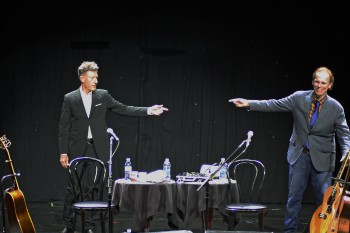
Lyle Lovett and John Hiatt on Cayamo 2012
Lyle Lovett and John Hiatt left their bands behind on this Cayamo trip and instead teamed up as an acoustic duo. They’re touring together this year and are obviously comfortable with each other. Lovett is the prodder, throwing out seemingly spontaneous comments and questions, and Hiatt is his wry equal.
It’s a measure of their chemistry that you leave their show thinking as much about the conversation as the music. Highlights of the first show included covers of Chuck Berry’s “Brown-Eyed Handsome Man” and Jesse Winchester’s “Brand New Tennessee Waltz.”
From there, each of their shows mixed it up, with fresh content and stories. Hiatt brought an iPad out for one show so that he could remember his songs, but instead fielded requests most of the evening, including “Angel Eyes,” which he abandoned mid-song in favor of “one I do know.”
Both talked about artists on the cruise that impress them. Hiatt said Richard Thompson makes him want to give up the guitar, and Lovett joked that his room is next to John Prine’s, and he been jamming with him all week. “He has no idea,” Lovett said.
The final show featured Sara and Sean Watkins and a stirring Lovett rendition of “Closing Time.”
Ben Kweller, Kevin Gordon enter Americana music chart
 There are just two new albums on this week’s Americana music airplay chart, as the Little Willies continue to hold onto the number one slot with For the Good Times.
There are just two new albums on this week’s Americana music airplay chart, as the Little Willies continue to hold onto the number one slot with For the Good Times.
New to the chart:
– Ben Kweller’s Go Fly A Kite at #34
– Kevin Gordon’s Gloryland at #37
(Gordon’s Gloryland album release party is scheduled for Feb. 17 at the Family Wash in Nashville.)
Most added albums this week include Amos Lee’s As the Crow Flies, Dave Carter and Tracy Grammer’s Little Blue Egg and the self-titled release by Sugar + the Hi-Lows.
Cayamo 2012: A floating music festival
By Ken Paulson
Cayamo, a Sixthman music festival on a cruise ship, is about to launch from the Port of Miami, with a boat full of musicians and Americana music zealots.
This is a distinctly different cruise, one on which the passengers give far less thought to destinations than their seat locations at dozens of different performances.
The line-up boasts big Americana names like John Prine, Lucinda Williams, Buddy Miller, John Hiatt, Lyle Lovett and Jim Lauderdale, plus emerging talents like the Belle Brigade, Levi Lowrey and the Civil Wars.
We’ll be reporting from Cayamo this week, with reviews and photos. Those on dry land should take note; the ship sells out in a matter of weeks each year and the cruise is full of people who have taken the trip several times before. You’ll find details at www.cayamo.com.
Celebrating Leo Kottke’s “6- & 12-String Guitar”
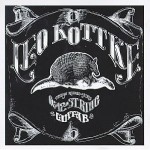 By Marv Wells
By Marv Wells
No singing. No backup band. No accompaniment of any kind. Just exactly what the album cover says… 6- & 12-String Guitar. Pure and simple.
Forty-three years ago, a young Leo Kottke recorded his second album, his first and only for Takoma Records, an obscure label founded by an eccentric master of the guitar, John Fahey. Who knew this album would go on to sell more than 500,000 copies (the best-selling title in the Takoma catalog) and become one of the top five sellers in the history of solo steel-string guitar recordings?
“The Driving Of The Year Nail”, the first song on the album, is a tasty appetizer, with which Kottke gets the opportunity to show off his speed, complexity, and light touch on the strings, alternating between hard-driving and angelic picking.
Some songs are fast-paced and upbeat, such as “Vaseline Machine Gun”, “Coolidge Rising” or “Busted Bicycle”, which sound as if Kottke is in a race with someone or something, almost frenetic at times. Others are a little more relaxed, such as “The Brain Of The Purple Mountain” or “The Fisherman”, right for listening to on a sunny, carefree day. “Jesu, Joy of Man’s Desiring”, the only non-original song on the album, has a reverential (but not heavy) tone to it, showing off Kottke’s light touch on the guitar strings.
One song, “The Sailor’s Grave On The Prairie”, more than any other, subtly demonstrates Kottke’s prowess. Near the end of the song is an odd sound…that of a guitar string breaking. Leo doesn’t miss a beat and keeps on playing as if nothing happened. How many players can do that?
Then there is the cover (a black and white drawing of an armadillo, hence the album often being called “the armadillo album” and the liner notes about the individual songs (often enigmatic and surreal) and a short biography of Kottke, entertaining, but mostly, if not totally, unbelievable.
Also unbelievable is that this album, recorded in just three hours, still has me listening in awe, fascinated as much by Kottke’s pure virtuosity and sound as thefirst time I heard it, 41 years ago. How many albums can a person say that about? Not many. That’s what makes 6- & 12-String Guitar an absolute must for every serious music aficionado.
Review: Bill Monroe 100th Year Celebration: Live At Bean Blossom
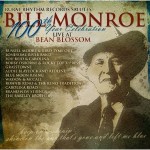 By Joe Ross
By Joe Ross
– A CD sampler of live cuts from a bluegrass festival can rarely capture the real feeling and spirit of those special musical moments when bands play their hearts out to thousands of fans. However, second best to actually being there, some favorite LPs of mine were those double-disc sets with an array of professional bluegrass bands on a a festival’s stage. The 1973 Bean Blossom LP comes to mind, and The Stanley Brothers’ Live at McClure album from is another winner. In more recent times, the Rural Rhythm record label released Live at Graves Mountain (RUR-1073), a great sampling of music from the 18th Annual Syria, Va. bluegrass festival in June 2010. That product celebrated the 55-year anniversary of the record label. Now they’ve released “Live at Bean Blossom” (RUR-1090) as a salute to Bill Monroe who would’ve been 100 years old in 2011.
Live at Bean Blossom was recorded June 11-18, 2011 at the 45th Annual Bill Monroe Festival in Indiana. Twelve different professional acts pay tribute to the Father of Bluegrass Music. The album begins with “Uncle Pen,” one of the greatest bluegrass songs ever written and a tribute itself to one of the Big Mon’s key influences. “Can’t You Hear Me Callin’” is one that Bill Monroe referred to as a “true-life song,” with its autobiographical, yet also universal meaning. Grasstowne’s acappella quartet arrangement of “Were You There?” is particularly reverent and moving.
The crowd never tires of the classic “Footprints in the Snow.” Some of the bands also choose to cover some of Monroe’s newer material such as “Six Feet under the Ground” (1978) and “Southern Flavor” (1988), as well as some of his most powerful instrumentals from the ’40s and ’50s, including “Big Mon” and “Bluegrass Breakdown.” The latter is performed with the three mandolins of Ronnie Reno, Jackie Miller and John Mayberry.
In the introduction to “With Body and Soul,” Chris West (of Blue Moon Rising) says, “I think Bill Monroe was the best songwriter ever, both in melody and lyrics. They’re just awesome.”
This album affirms it, as well as the fact that Monroe started a genre of music that continues to grow around the world today. Every bluegrass musician has memories they cherish of Bill Monroe and his music. The man was larger than life, and this CD provides only a snapshot of the tremendous influence he’s had on so many others.
(Follow Sun209 on Twitter at sun209com and on Facebook.)
Feb. 3, 1959:The music lives on
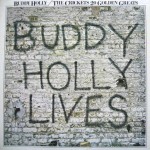 By Marv Wells
By Marv Wells
“Clear Lake/Mason City” the highway sign reads.
How many times have I driven past this exit on 1-35 over the past 30+ years and said “Someday I’ll check it out?” “It” was the site of Buddy Holly’s plane crash in 1959. Somehow I’d gotten the impression that Clear Lake was a ways off, thirty miles or more. Never enough time to make the side trip, until this day.
Earlier, browsing through the tourist brochures at an Iowa Welcome Center, one from Clear Lake caught my eye. It included precise directions to the crash site and the realization that this town was right on the interstate. No matter how long it took, this was the day to see where history was made.
A free city map from the Chamber of Commerce showed that the Surf Ballroom, where Holly, along with Ritchie Valens, J. P. “The Big Bopper” Richardson, Dion and tthe Belmonts, and Frankie Sardo played that fateful February night, was just a few blocks away. It’s a block away from the lake from which the city takes its name and it’s not the original Surf Ballroom. Fire destroyed that in 1947 and in 1948, the current venue, where rock history was made, was built.
Three sightseers were looking around as I drove up. The Surf looks kind of plain on the outside. Apparently it’s more impressive inside, but the building was closed at the time of the visit. It is still being used for concerts and other big events. Z Z Top was scheduled for a show in a few weeks, according to the marquee.
From the ballroom to the crash site is about 6 miles outside of town. It’s easy to find; the roads are marked quite well, even the gravel one. The destination is a bean field, seemingly in the middle of nowhere. There is nothing to indicate the site’s location except a large pair of black eyeglasses and a well-worn, half-mile path along a fence row.
The memorial is pretty simple and low-key: a pair of aluminum wings with the name of the pilot killed in the crash; an aluminum guitar with the three musicians’ names; three chrome “records” with the names of the artists’ hits and the record label they were on. Fans leave their own mementos: pictures, artificial flowers, a hat, handicapped parking hangtags, beads and a couple of scarves hanging from a fence post.
The three people that had been at the ballroom earlier were there and leaving. It’s quiet in the field. An air of solemnity hangs in the air., contemplation of the final moments of those killed in a storm so bad that no attempt was made to recover their bodies until the next day.
After a few minutes, it’s time to leave.
On the way back to the car, two other visitors are walking up the path. That’s six people in less than a half-hour, making their way to pay their respects, on a Monday afternoon, in late September. Straight ahead, probably a mile away, I-35 is visible.
Driving home, I thought more and more about Holly, Richie Valens and the Big Bopper,, and the notion, romanticized primarily by Don McLean, that February 3, 1959 was “the day the music died”. Many proclaim Clear Lake to be “where the music died,” but what really died that day?
Tragically, Buddy Holly, Ritchie Valens, the Big Bopper and the plane’s pilot died. But the music… not by a long shot. The music was still in its infancy, and today, 53 years later, it’s still going strong and growing.
Holly had more hits after his death than when he was alive, thanks to the multitude of studio recordings he had made and not yet released. His innovations in style, recording technique and artistic control continue today.
The Rolling Stones’ first US hit was a Buddy Holly song. The Beatles’ and The Hollies’ names were intended as homages to Holly. A multitude of artists and bands have covered his songs, including Linda Ronstadt, the Nitty Gritty Dirt Band, the Beatles, the Grateful Dead, the Flamin’ Groovies, Foghat, the Everly Brothers, Patti Smith, the Beach Boys, John Lennon, Marshall Crenshaw, and may more. John Lennon, Peter Asher and Elton John were inspired to wear glasses because of Holly.
Ritchie Valens’ short career greatly boosted interest in Latino music and opened the way for the likes of Carlos Santana, Los Lobos and Los Lonely Boys. Group as varied as The McCoys and The Ramones have covered his songs.
So maybe it’s time to do away with thinking that February 3 was “the day the music died”. Maybe we should think of it as the day that began a heightened awareness and an increased appreciation of the still-new kid on the block, American rock ‘n’ roll.
Guy Clark tribute #1; Ani DeFranco, Orbo & Longshots, Sons of Fathers enter chart
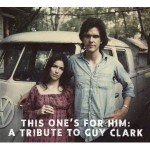 This One’s For Him, the outstanding double-CD tribute to Guy Clark, lands in the #1 spot this week after a steady run up the Americana Music radio airplay chart. You’ll find our review here.
This One’s For Him, the outstanding double-CD tribute to Guy Clark, lands in the #1 spot this week after a steady run up the Americana Music radio airplay chart. You’ll find our review here.
New to the chart this week:
– At #17, the massive Chimes of Freedom tribute to Bob Dylan. The album, with a generation-spanning line-up of artists (Patti Smith, My Morning Jacket, Lucinda Williams, the Belle Brigade, Joan Baez and Jackson Browne among them) benefits Amnesty International.
– At #29, Ani DeFranco’s Which Side Are You On?
– At #32, Orbo and the Longshots’ Prairie Sun.
– At #37 , the self-titled album by Sons of Fathers
– At #38, Lincoln Durham’s The Shovel vs. The Howling Bones
And this note: The much-debated Grammy nominee Linda Chorney had one of the most-added albums on Americana music radio this week, with 10 stations picking up Emotional Jukebox.
(Follow Sun209 on Twitter at sun209com and on Facebook.)
Review: Carolina Road’s “Back to My Roots”
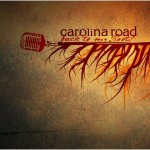 By Joe Ross
By Joe Ross
It’s been about five years since I reviewed Carolina Road’s two releases on Tom T. Hall’s Blue Circle Records label. I found the hardworking band from North Carolina to be fully dedicated to presenting a traditional bluegrass sound with a copious amount of contemporary charisma. Now associated with Rural Rhythm Records, Back to My Roots is the band’s second release on that label. While the band has experienced a few personnel changes on guitar and bass over the years, the core of this group remains Lorraine Jordan (mandolin, vocals), Josh Goforth (fiddle, vocals), and Ben Greene (banjo, vocals). They bring strength and stability to the table. The band’s newest members are Tommy Long (guitar, lead vocals) and Eddie Biggerstaff (bass). Both have plenty of experience and fit right in.
Lorraine or Tommy had a hand in the songwriting of three numbers (“Back to My Roots,” “Granny’s Garden,” “Cold Carolina Snow”), and the title cut recalls the country road, whippoorwills, hilltops, meadows, summer breeze and simple things from our past and upbringing. The rest of their set comes from a wide variety of suitable writers, including the Louvin Brothers, Clyde Moody, Mack Magaha/Don Reno, Randall Hylton, and Tom T. and Dixie Hall. Of special note are those two songs (“The Hills of Home,” “Sing a Bluegrass Song”) from fellow North Carolinian A. L. Wood, an expert banjo player and singer who recorded with his Smokey Mountain Boys on the Rebel label back in the 1970s. The Halls’ “A Light in my Window, Again” was inspired by Kentucky Governor Paul E. Patton’s speech at the Bill Monroe homeplace dedication in Rosine, Ky.
“Back to My Roots” indicates that Carolina Road is still proud of its traditional music foundation, but the band’s character and persona are much deeper than just the solid presentation of a few traditional numbers. They also have an affinity for newer tunes from contemporary writers. It’s a propulsive and potent combination. Carolina Road doesn’t have the intensity of Monroe’s high lonesome, but they have great familiarity and knowledge of the style. They comfortably and successfully incorporate many elements of the traditional sound, capture the heart of the genre, and tap into its soul with their accomplished musicianship.
Review: I’ll Be Here In The Morning: The Songwriting Legacy of Townes Van Zandt
By Terry Roland
I’ll Be Here In The Morning: The Songwriting Legacy of Townes Van Zandt by Brian T. Atkinson Published by Texas A&M University Press.
The question comes to mind when first picking up Brian Atkinson’s new book, I’ll Be Here In The Morning: The Songwriting Legacy of Townes Van Zandt: Do we need another book or really any more observations about the enigmatic Texas folk-country-blues poet? With two biographies already in print, two documentaries and recorded tributes, have we come close to exhausting observations of his legacy and the comedy and tragedies of a life that led to an iconic library of songs and stories that have been packaged and repackaged for commercial gain?
A few chapters in and the answer becomes clear. This is not a traditional biography or an attempt to simply cash in. The premise here is balance, perspective and a view of the universal nature of art. While the word-of-mouth and commercial use of Townes’ name and image in Americana circles today exceeds any fame he approached during his lifetime, he sometimes evokes a holiness that hardly matches the reality.
Atkinson’s book attempts to bring us to the core of Townes’ identity as an artist and person, complete with adoration, criticism, flaws, gifts and curses in all of his unwashed personal insanity and wild creativity. Because of the format of the book. he succeeds more often than not.
Each chapter comes from musicians and songwriters, some friends and some strangers, revealing their own experiences with Townes Van Zandt. While this narrative choice could run aground with a tendency to deify the legendary Texas songwriter or take the opposite route through the humorous and sometimes hilarious stories of his many drunken escapades, skillful editing and the careful selection of contributors allows Atkinson to present a portrait of Townes as complex and elusive as many of the songs he wrote.
This Townes-as-Citizen-Kane approach never leads to the ultimate Rosebud moment revealing what made Townes such a brilliant and tragic figure. This is not the point of the book. The subtext is clear; life and art can never be completely explained by any one person, but in the end it is to be enjoyed and appreciated without condition, even through its dangers, tragedies, risks, insanity and joy. In the end, all we have is the song and in many ways, that’s enough. As Townes’ song title suggests, we do it all ‘for the sake of the song.’
Contributors to the book offer insights that may reveal more about themsleves than they intend. For example Counting Crows’ Adam Duritz finds Townes’ songs so hard to inhabit that he hesitates to sing his songs. Guy Clark recalls how both he and his close friends were as influenced by Dylan Thomas as they were by Bob Dylan. Kristofferson remembers that Townes had no idea of the respect he had from other songwriters. Other contributors include veterans Billy Joe Shaver, Chip Taylor, David Olney and Ramblin’ Jack Elliot.
While the majority share a real love of Townes, Atkinson is careful not to edit out criticism, including The Gourds’ Kevin Russell who believes Townes’ entire songwriting legacy can be summed up in what many view as his best album, Live at the Old Quarter.
Atkinson has made a point of selecting contributing artists who are friends and peers and also younger artists who have been influenced by Townes, which enrich the book. For example, Jay Farrar of Uncle Tupelo and Son Volt and singer-songwriter Cory Chisel are two artists who demonstrate the influence the songwriter still has on younger artists, while the obvious choices of Rodney Crowell, Guy Clark, Ray Wylie Hubbard and Butch Hancock attest to Townes’ legacy.
Still, the inclusion of an artist like Jewel and the omission of Eric Andersen, who wrote songs with Townes and Steve Earle and is regarded by many as Townes Jr., is hard to understand.
While we have every right to be skeptical about a new Townes Van Zandt biography,
Atkinson nicely captures his spirit and legacy in this valuable new book.
